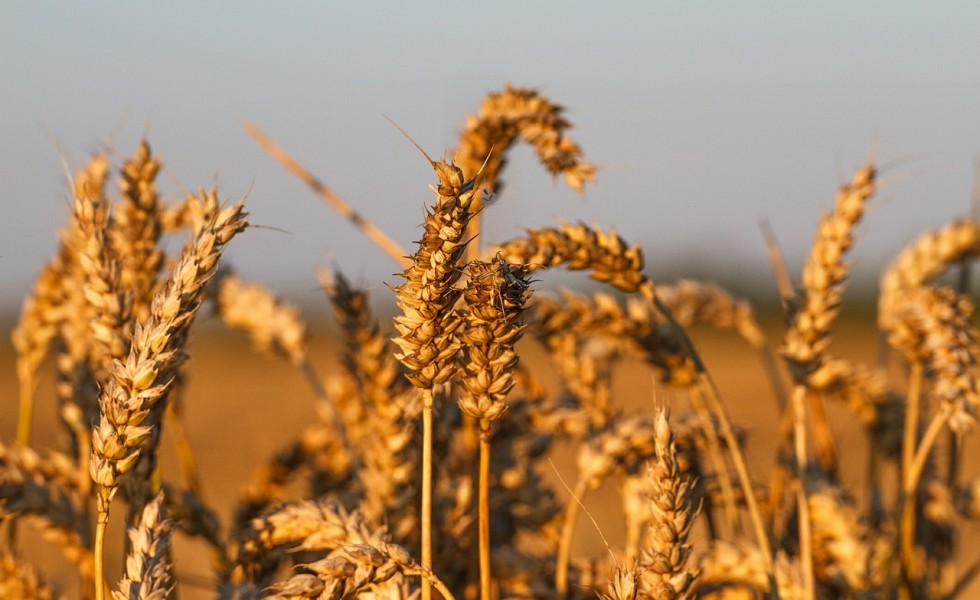The Carnivore’s Dilemma
Posted on August 11, 2014

If most American followed commodity prices as blindly as they follow the Kardashians, the national dinner menu might well feature bushels of cheaper-by-the-day grains and teaspoons of record-priced pork, beef, poultry and fish.
Call it the revenge of the vegan or (with apologies to author Michael Pollan) the carnivore’s dilemma, but 2014 is fast becoming a year of dirt-cheap grain protein and to-the-moon expensive animal protein.
It began with nearly ideal weather across most U.S. grain-growing areas. Timely planting of plenty of acres this spring has led to a price meltdown this summer: wheat futures slashed a knee-buckling 30 percent since early May, new crop corn futures a similarly smacked 30 percent lower since mid-May and 2014 soybean futures clipped 17 percent since late May.
Meanwhile back at the ranch, hog farm or poultry barn, the story is blue sky, clear sky and sky high. After a mid-July stumble, feeder cattle futures, live cattle futures and lean hog futures are back testing their lofty highs—$2-plus for feeders, $1.50 for fat cattle, and $1.13 for hogs.
Yes, those are either record or near-record prices; yes, those prices are unsustainable; and, no, not even the big roosters at the U.S. Department of Agriculture are willing to bet the price run-up is over for fear of getting run over.
“With the end of the grilling season in sight,” noted USDA’s monthly Livestock, Dairy and Poultry Outlook report July 17, “consumer concerns [over high prices] will likely be realized—but at what price levels, and how sustainable will those levels be in the face of anticipated tight supplies…?”
I don’t know, you don’t know and, for the record, USDA doesn’t know.
Widespread drought in southwest U.S., the biggest, hottest cause behind dwindling cattle numbers and rocketing beef prices, continues. Until cattle country receives relieving rains, consumers can’t expect much relief at the meatcase.
And that, in short, could be a long time; well into 2015, reckons USDA.
The picture is not as muddled on hog side. U.S. pork production, according the July 17 report, is forecast to fall another 2 percent in 2014 as the deadly PEDv disease continues to ravage herds and boost prices. To make up for the shortfall in numbers, USDA says, producers will feed healthy hogs to heavier weights.
Bigger pigs can’t make up the fewer pigs, however, and USDA forecasts July-through-December hog prices 25 to 30 percent higher than 2013. Next year may see numbers climb, but prices, guesses USDA, won’t fall much—maybe a tiny 5 percent.
The takeaway? Eating high—or low, for that matter—off the hog is gonna’ get even more expensive this year than last.
Corn prices don’t have that problem. On July 11, USDA pegged 2014 production, given normal weather, at 13.86 billion bu. The weather across most of the U.S. cornbelt, however, hasn’t been normal; it’s been spectacular. That near-perfection should show up in the next big USDA crop report Aug. 12.
Private analysts aren’t waiting. Many now peg 2014 production in the 14.3 billion bu. area, a healthy leap above 2013’s record 13.9 billion bu. crop. The higher number comes courtesy of higher estimated yields—170 bu. per acre nationwide compared to USDA’s 165 bu. per acre. Harvest prices, already under $4, suggest the bigger, private numbers are already in the market.
Soybean prices are sliding south, also. Record acres combined with great weather easily will yield record production. The acre-weather combo already is yielding below-$11 per bu. futures prices, a mark not seen since late 2010.
The bigger question right now for soybeans may be how deeply today’s cheap futures prices will cut 2014/15 South American plantings. The answer might be this winter’s growing baby bull.
In fact, it might be this winter’s only baby bull when looking at 2014 grain markets halfway through this near-perfect summer.
Now, anyone have any bacon they can spare for this BLT-crazed omnivore? I’ll pay…
Share This